QuestionI set up a new 26 gallon tank in July and everything was going good as far as levels for the first two months when i started having some problems with my pH and ammonia going up. I got that corrected and then my Nitrite level went off the charts. I have been working with the local pet store and following all of their suggestions... i started out doing daily water changes, adding salt and other chemicals. All my other levels stayed ok but i could not get the nitrite to go down. So i basically started over... I took my fish out cleaned the entire tank including rock, plants decorations. I did not touch the filter! I was told to leave the filter alone and put it back on tank and let it filter for a few hours before adding fish back. I then changed my filter out 3 days later. After doing all this I continued to check levels daily and everything was great including my NO2 level for approx. 10 days... All levels are good except for my NO2 level which is now starting to go back up. It is at 1.0+ and rising on my chart. I'm frustrated and need some advice... How can i determine what is causing my high NO2 levels and how do i get them to a safe level? Water changes and chemicals don't seem to be doing the job? Is it possible my filter is not working properly? My tank now only has 1 mollie, 1 guppy, 1 other adult fish and 4 babies. I hope i have included all the information you requested so we don't play email tag :-)
AnswerHi Jane
I think that's enough info :) I hate playing tag online, especially since I'm so busy lately I've had to reduce my questions I can take. Sounds to me like the tank is just going through the normal cycle process. Not sure what chemicals you added, but those in addition to "starting over" didn't help lol. So for now, stop using whatever products you have. The only thing you should be using, is a water dechlorinator if you're on city/public water supply to remove chlorine/chloramines. That's it. No ph up/down products, no ammonia removers, nothing else. Maybe some salt, I'll get into that in a bit though.
In a nutshell what happens with the nitrogen cycle, fish produce ammonia through their waste and respiration, also uneaten food or anything that dies and rots in the tank will produce ammonia. This is the start of the cycle. A beneficial bacteria develops that consumes the ammonia and converts it to nitrites. Another beneficial bacteria develops and converts the nitrites to nitrates.
Ammonia will spike then fall, then nitrites will spike and fall, then nitrates will start showing up. When you have readings on your test kit of ammonia and nitrites at 0 ppm, and nitrates are present(after the first two spike), then your tank is considered "cycled". Ammonia and nitrites are very toxic to fish, some fish will tolerate them a bit better then others though. But it's common to see fish deaths when those are present. Nitrates are not as toxic to fish, but you still want to keep them under 20 ppm. This is done through weekly water changes, I recommend changing out about 25% weekly along with a good gravel vacuum. That's the best way to keep the water quality good, along with not overstocking, and not overfeeding.
Also, here's a good link I use for reference that explains the cycle process, probably a bit more in depth then what I did:
http://freshaquarium.about.com/cs/biologicalcycle/a/nitrogencycle.htm
So, possibly with the chemicals you used, and the starting over, you interrupted that cycle process, so it had to start over and that's why you're seeing the nitrites again. On average, it takes anywhere from 6-12 weeks for the cycle to complete. You have 2 options at this point to let the tank finish cycling, and hopefully keep your fish alive. The first, do daily water changes of about 20% to help dilute the nitrites in the water for the fish. Nitrites inhibit the fish's ability to absorb oxygen into their blood stream. So they basically suffocate. You can add 1 tablespoon of salt per 5 US gallons, salt is supposed to combat that and allows them to absorb the oxygen. One thing to keep in mind though, salt doesn't evaporate with the water, it's only removed when you do water changes. So, if you remove 5 gallons of water, only add in 1 tablespoon of salt. The fish you have should tolerate the salt fine, with the exception of the "adult fish", tetras, loaches, catfish, plecos, any scaleless fish are sensitive to salt.
The other option is to pick up some Prime by Seachem. It's a water dechlorinator, but it also neutralizes ammonia and nitrites to a nontoxic form without removing them-so the tank can still cycle, and the fish can survive it. It dissipates after 24 hours, so needs to be added daily. With this method, you could get away with doing water changes once or twice a week of about 20-25%. A large bottle costs about 8-10. and most pet stores carry it.
Either option should be fine to do. The tank just needs to run it's course, and it should be done cycling in a few weeks.
Hope that helps and good luck! Let me know if you have more questions.
Christy

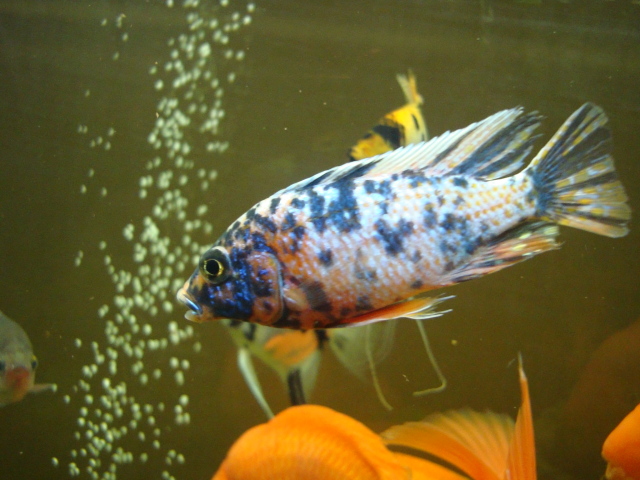 parrots and cichlids
Question
Cichlids
Hi,
Please can you tell which cichlid
parrots and cichlids
Question
Cichlids
Hi,
Please can you tell which cichlid
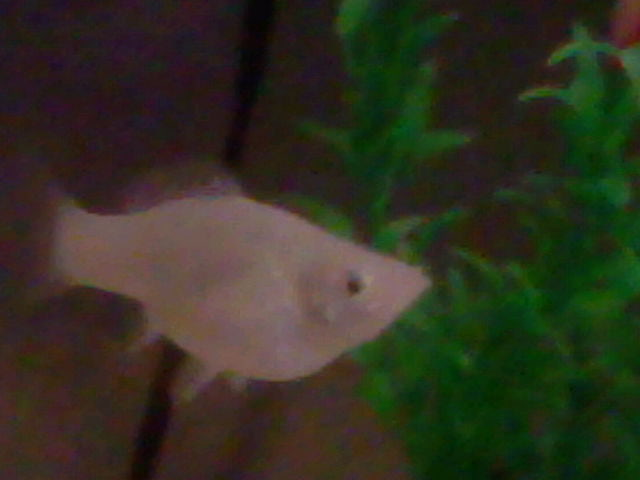 hidden
QuestionQUESTION: its me travis again the molly looks l
hidden
QuestionQUESTION: its me travis again the molly looks l
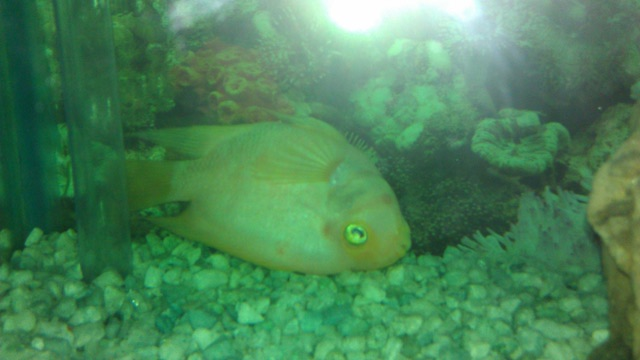 my 3 year old parrot stays upside down in the bottom of the tank.
Question
parrot laying upside d
Hello,
My parro
my 3 year old parrot stays upside down in the bottom of the tank.
Question
parrot laying upside d
Hello,
My parro
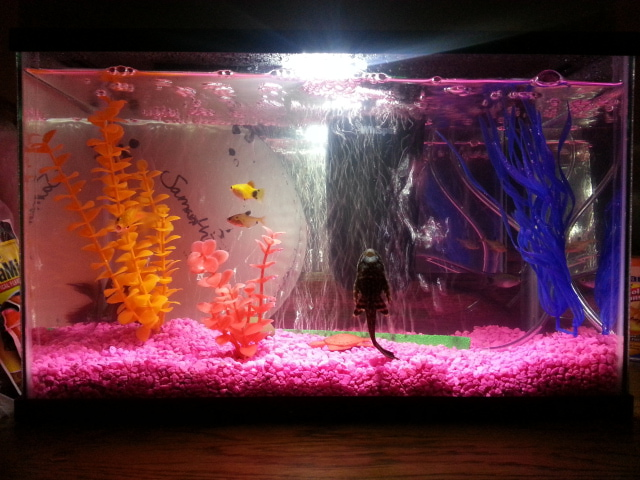 help! I have a new 5 gal tank & too many fish, I think
Question
aquarium
My daughter won 2 goldfish at
help! I have a new 5 gal tank & too many fish, I think
Question
aquarium
My daughter won 2 goldfish at
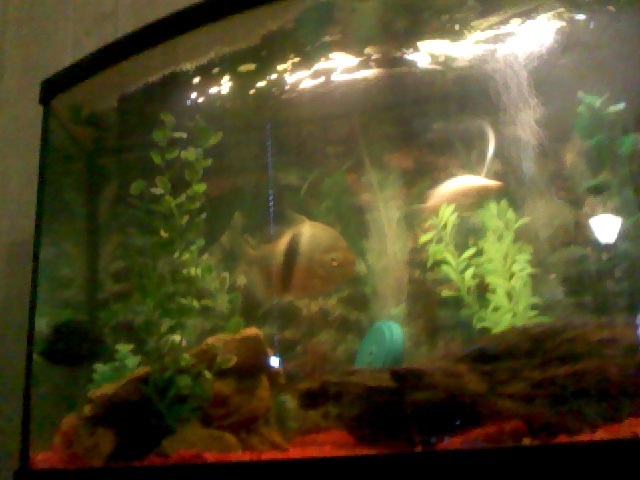 46 gallon tank
Questionmy tank
QUESTION: hello in my tank I use
46 gallon tank
Questionmy tank
QUESTION: hello in my tank I use